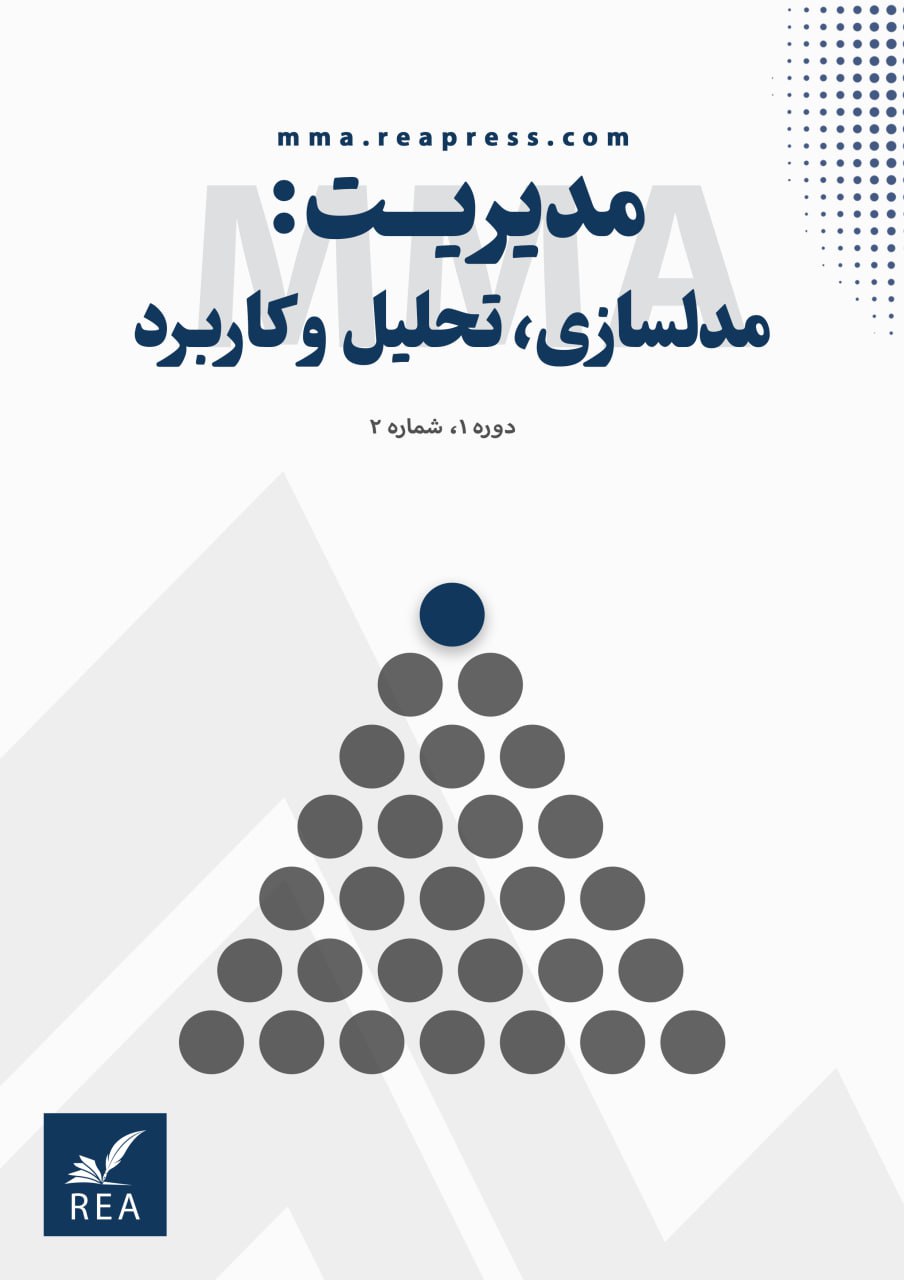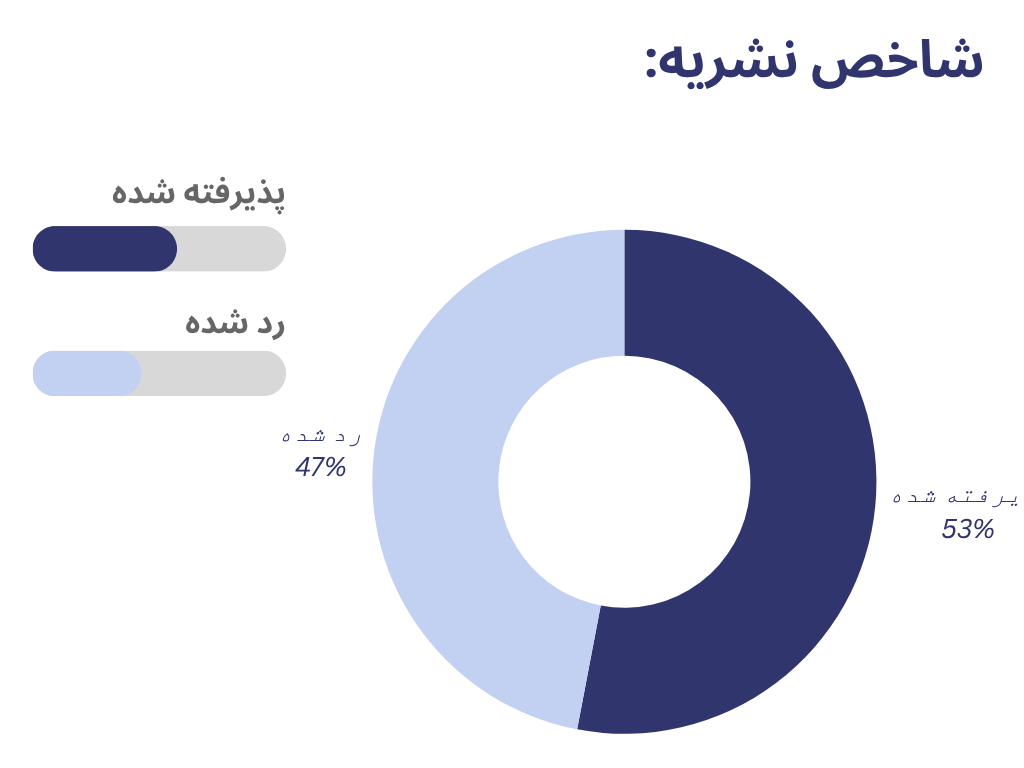کاهش نرخ ترک شبکه اپراتورها با تبلیغات محیطی هوشمند: رویکردی نوین با DEMATEL و VIKOR
چکیده
هدف: این پژوهش با هدف شناسایی عوامل موثر بر نرخ ترک شبکه در اپراتورهای موبایل و انتخاب بهترین استراتژیهای تبلیغات محیطی برای کاهش این نرخ انجام شده است. با توجه به افزایش رقابت در صنعت مخابرات و اهمیت حفظ مشتریان، این مطالعه بهدنبال ارایه راهکارهایی عملی برای بهبود وفاداری مشتریان و کاهش هزینههای ناشی از ترک شبکه است.
روششناسی پژوهش: در این پژوهش از تکنیکهای ترکیبی DEMATEL و VIKOR استفاده شده است. ابتدا با بهکارگیری روشDEMATE، روابط علی بین عوامل موثر بر نرخ ترک شبکه (مانند کیفیت پایین خدمات، قیمتهای غیررقابتی و مشکلات خدمات مشتریان) شناسایی شد. سپس با استفاده از روشVIKOR، گزینههای مختلف تبلیغات محیطی ارزیابی و بهترین استراتژی انتخاب گردید. دادههای مورد نیاز از طریق نظرات ۱۵ نفر از مدیران و کارشناسان یکی از اپراتورهای تلفن همراه کشور جمعآوری شد.
یافتهها: نتایج تحلیلها نشان داد که کیفیت پایین خدمات و ناسازگاری تبلیغات بهعنوان مهمترین عوامل علی در افزایش نرخ ترک شبکه شناخته میشوند. همچنین، تبلیغات مشارکتی بهعنوان بهترین گزینه برای کاهش نرخ ترک شبکه انتخاب شد. این گزینه به دلیل هزینههای اجرایی پایینتر، دامنه دسترسی گستردهتر و تاثیر مثبت بر وفاداری مشتریان، نسبت به سایر گزینهها برتری دارد.
اصالت / ارزش افزوده علمی: این پژوهش نشان میدهد که بهبود کیفیت خدمات و هماهنگی تبلیغات با نیازهای مشتریان میتواند تاثیر قابلتوجهی بر کاهش نرخ ترک شبکه داشته باشد. همچنین، استفاده از تکنیکهای ترکیبی DEMATEL و VIKOR میتواند به مدیران و تصمیمگیرندگان در صنعت مخابرات کمک کند تا استراتژیهای تبلیغاتی بهینهتری طراحی کنند. این یافتهها میتواند به کاهش هزینههای ناشی از ترک مشتریان و افزایش سودآوری اپراتورها منجر شود.
کلمات کلیدی:
نرخ ترک شبکه، تبلیغات محیطی، اپراتورهای موبایل، تکنیکVIKOR ، DEMATEL، تصمیمگیری چندمعیارهمراجع
- [1] Hussein, M., & Khalid, S. (2023). Customer churn prediction in telecom sector using machine learning. Telecommunications systems, 83, 213 – 230. https://doi.org/10.1007/s11235-023-00937-4
- [2] Ribeiro, H., Barbosa, B., Moreira, A. C., & Rodrigues, R. G. (2024). Determinants of churn in telecommunication services: A systematic literature review. Management review quarterly, 74(3), 1327–1364. https://doi.org/10.1007/s11301-023-00335-7
- [3] Gao, X., Guan, Y., Sun, D., Liu, L., Yang, J., Wang, Z., Guo, Z., Wang, Y., & Gong, G. (2022). An ecological, power-lean, comprehensive marketing evaluation system based on DEMATEL–CRITIC and VIKOR: A case study of power users in Northeast China. Energies, 15(11), 3986. https://doi.org/10.3390/en15113986
- [4] Gurung, B. (2023). Impact of sustainable marketing activities on customer retention. KMC journal, 5(2), 139–156. https://doi.org/10.3126/kmcj.v5i2.58235
- [5] Le, C., Oláh, J., & Miklós, P. (2024). Advanced multi-criteria decision-making technique to describe the relationship between criteria and select optimal alternatives. Soft computing, 28, 13107–13125. http://dx.doi.org/10.1007/s00500-024-10372-3
- [6] Aydin, S., & Özer, G. (2005). The analysis of antecedents of customer loyalty in the Turkish mobile telecommunication market. European journal of marketing, 39(7/8), 910–925. https://doi.org/10.1108/03090560510601833
- [7] Bolton, R. N., Lemon, K. N., & Verhoef, P. C. (2004). The theoretical underpinnings of customer asset management: A framework and propositions for future research. Journal of the academy of marketing science, 32(3), 271–292. https://doi.org/10.1177/0092070304263341
- [8] Glady, N., Baesens, B., & Croux, C. (2009). Modeling churn using customer lifetime value. European journal of operational research, 197(1), 402–411. https://doi.org/10.1016/j.ejor.2008.06.027
- [9] Poudel, S. S., Pokharel, S., & Timilsina, M. (2024). Explaining customer churn prediction in telecom industry using tabular machine learning models. Machine learning with applications, 17, 100567. https://doi.org/10.1016/j.mlwa.2024.100567
- [10] Wagh, S. K., Andhale, A. A., Wagh, K. S., Pansare, J. R., Ambadekar, S. P., & Gawande, S. H. (2024). Customer churn prediction in telecom sector using machine learning techniques. Results in control and optimization, 14, 100342. https://doi.org/10.1016/j.rico.2023.100342
- [11] Saleh, S., & Saha, S. (2023). Customer retention and churn prediction in the telecommunication industry: A case study on a Danish university. SN applied sciences, 5(7), 173. https://doi.org/10.1007/s42452-023-05389-6
- [12] Statista. (2024). Out-of-home advertising-worldwide. https://www.statista.com/outlook/amo/advertising/out-of-home-advertising/worldwide
- [13] Bhatti, G. S., & Kumar, P. (2023). Emerging trends in out‑of‑home (OOH) advertising: An overview. Journal of propulsion technology, 44(6), 5453–5461. https://www.propulsiontechjournal.com/index.php/journal/article/view/4989
- [14] Madlenak, R., Chinoracky, R., Stalmasekova, N., & Madlenakova, L. (2023). Investigating the effect of outdoor advertising on consumer decisions: An eye-tracking and A/B testing study of car drivers’ perception. Applied sciences (switzerland), 13(11), 6808. https://doi.org.10.3390/app13116808
- [15] Moshiri, M., Mirabi, V. R., & Vazvi Doost, H. (2019). Presenting a model of factors affecting customer conversion using structural equations and fuzzy inference system. Journal of insurance (insurance industry), 34(4), 163-195. (In Persian). https://sid.ir/paper/378854/fa
- [16] Javid Moeid, M., & Toloei Ashlaghi, A. (2020). Investigating factors affecting customer satisfaction of Iranian mobile operators through combined discrete-event system dynamics simulation. Industrial management, 12(9), 672-696. (In Persian). https://imj.ut.ac.ir/article_83188.html
- [17] Sinai, R. & Barzaki, Z., (2018). Pricing of free and joint products of mobile phone manufacturers and telecommunications service operators in their cooperative and non-cooperative states: A game theory approach. Industrial engineering and management, 34(1.2), 15-26. (In Persian). https://doi.org/10.24200/j65.2018.5608
- [18] Akhavein, A., RezaHoseini, A., Ramezani, A., & BagherPour, M. (2021). Ranking sustainable projects through an innovative hybrid DEMATEL‐VIKOR decision‐making approach using Z‐number. Advances in civil engineering, 2021(1), 6654042. https://doi.org/10.1155/2021/6654042
- [19] Ashouri, F. (2016). Quality indicators in the mobile industry rankings based on indicators of customer satisfaction with the hybrid approach DEMATEL and ANP appropriate strategy based on gray system. International review, 3(4), 62–72. https://www.ceeol.com/search/article-detail?id=899719
- [20] Habibi, A., & Afridi, S. (2023). Multi-criteria decision making. Naroon publications. (In Persian). https://parsmodir.com/book/madm-book
- [21] Fortenberry JR., J. L., & McGoldrick, P. J. (2020). Do billboard advertisements drive customer retention? Journal of advertising research, 60(2), 135–147. https://doi.org/10.2501/JAR-2019-003
- [22] Duarte, J. S. (2013). JCDecaux: Strategies for out-of-home advertising to integrate mobile devices usage [Thesis]. https://repositorio.ucp.pt/handle/10400.14/20578
- [23] Katkar, A. L. (2024). The study of visual elements in outdoor advertising and its effect on audience engagement. http://137.59.67.20/xmlui/handle/123456789/16064
- [24] Farshbaf‐Geranmayeh, A., Rabbani, M., & Taleizadeh, A. A. (2019). Cooperative advertising to induce strategic customers for purchase at the full price. International transactions in operational research, 26(6), 2248–2280. https://doi.org/10.1111/itor.12427







